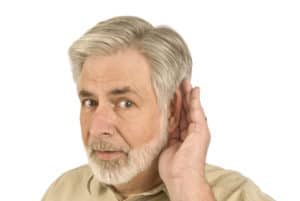Time To Read: 5 minutes
- What causes single-sided deafness
- What can be done to address single-sided deafness
Hearing loss comes in many forms - it’s as unique as the individual.
One of the more complex forms of hearing loss is single-sided hearing loss (also known as single-sided deafness).
It means one ear having perfect, or near perfect hearing in one ear and being profoundly deaf in the other
In the same way we have our optimal vision when we have a pair of eyes, we hear our best when we have two ears working.
When one ear doesn’t work, you’ll experience something called a shadow. That means that you will be missing sounds coming from the deaf side. This makes it difficult to hear well in noisy places and this has a flow-on effect on you energy and well-being.
Here are the issues:
- Sound location: Your brain uses input from both ears to determine where a sound is coming from. If you’re not getting enough input from both ears. It can be difficult to know where a sound is coming from.
- Hearing in noise: Filtering out extraneous noise to concentrate on the sounds you want to hear, like a person speaking is more difficult when you have to rely on one ear.
- Cognitive load: Consider your brain as a computer. It has a finite amount of processing power. Active listening takes brain power. And active listening in a noisy or distracting environment takes even more brain power. This is called Cognitive Load.
- Binaural loudness summation: That’s a fancy name for saying that if you can hear well with one ear you can hear even better with two. The brain places greater attention to sounds it perceives from both ears.
What causes single-sided deafness?
Permanent single-sided deafness happens for a number of reasons including:
- Meniere’s disease
- Head injuries
- Infections which affect the ear
- An inherited condition
- Some autoimmune and neurological conditions
If you’ve noticed a sudden loss of hearing in one ear, we recommend visiting your local doctor as soon as possible for a check-up to rule out a serious medical condition.
Fortunately, not every condition that affects your hearing is serious or permanent. Excess ear wax, sinus conditions and seasonal infections are benign causes and can be treated.
 What can be done to address Single-Sided Deafness?
What can be done to address Single-Sided Deafness?
For many there is good news thanks to modern hearing aids called Contralateral Routing of Sound (CROS).
CROS hearing aids is a pair of hearing aids. One aid is placed in the deaf ear. It transmits sound to the hearing aid in the good ear.
For people who have hearing loss in their 'good' ear, a solution for your audiologist to try is BI-CROS, in which the hearing aid in the ‘better ear’ is programmed to help overcome your hearing loss.
A comprehensive hearing assessment performed by an audiologist will tell you whether a CROS or a BI-CROS is a solution for you.
The benefits of CROS/BI-CROS solutions is the ability to hear more effectively in a wider range of situations. No longer will you be missing out on sounds, making driving safer and easier.
These new hearing aids are also easy and convenient to use. At Value Hearing, we have a 60 day complete money-back guarantee which means you can get used to wearing the CROS and see the difference it makes to your hearing.
Like all hearing aids, wearing a CROS takes time to get used to. We have some tips here on how to get used to wearing hearing aids which you can read here.